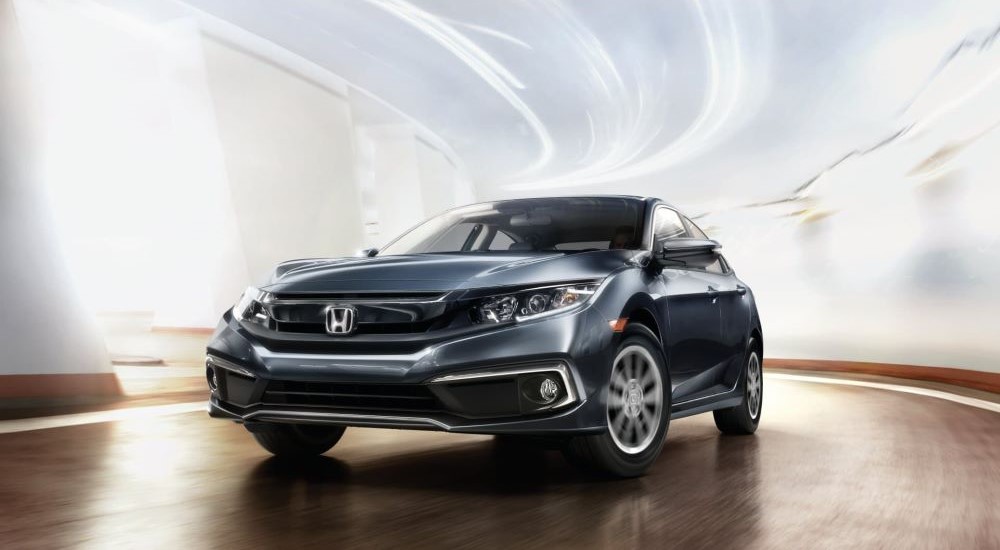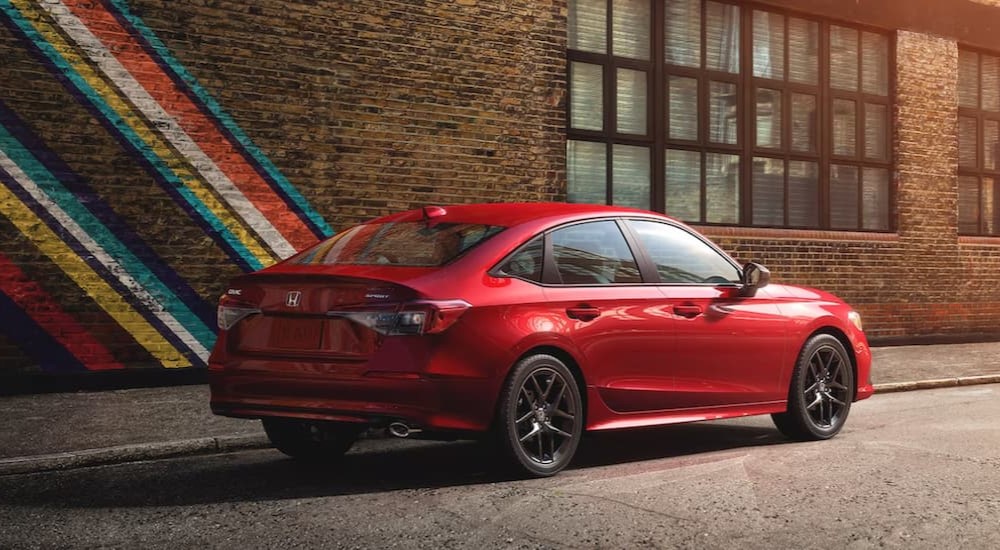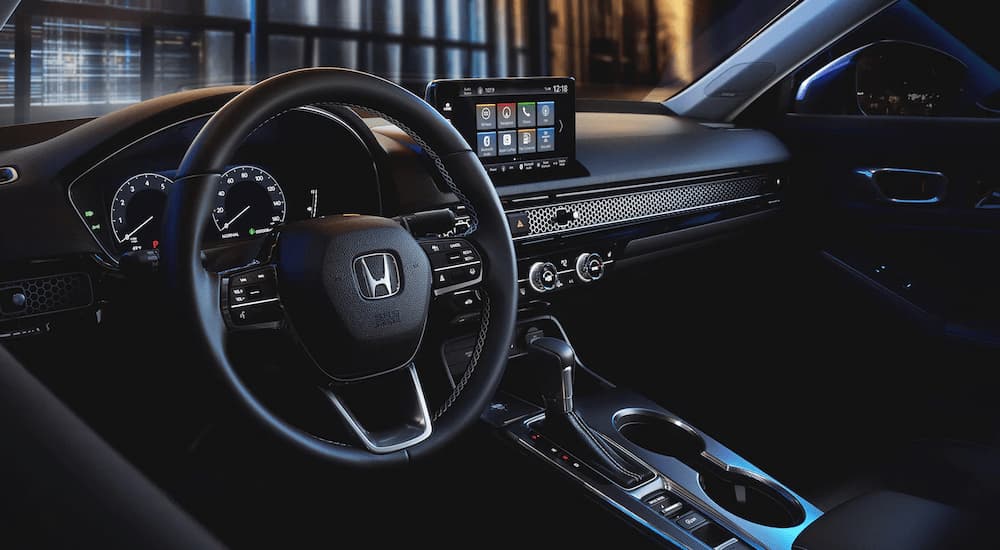The year was 1972, and change was in the air. Nixon had just been re-elected but was under the cloud of Watergate. The Oakland As were about to win their first of three straight World Series, while swimmer Marc Spitz captured seven gold medals at the Munich Olympics. I turned eight years old, and remember listening to Elton John’s “Rocket Man” while riding in my parents’ Cadillac. My parents liked big cars, but our neighbor bought a brand-new Honda Civic. He worked in the energy industry and saw that increasing gas prices were going to be an issue. He didn’t want to be caught with a gas-guzzler, and opted for the new coupe offered by a company known more for its motorcycles than its cars. A year later, when the oil crisis hit, he was speeding past us as we waited in line at the pump to fill up our Cadillac.
When it came time for me to get my first car, I didn’t hesitate. I bought a 1994 Honda Civic EX in white and got many years out of that great sedan. It had excellent performance, a roomy interior, and, best of all, it didn’t hit me in the wallet every time I went to fill up the tank. This is probably why over 50 years later, Honda is still selling the Civic as one of its most popular models. Still, there have been many changes over the years, which you can see when comparing a 2024 Honda Civic sedan with the original model from 1972. Even with these changes, Honda has kept what made the Civic great from when it first hit the road back then.
Cost and Styling
When my parents’ neighbor went to buy his first Honda Civic back in 1972, he had just one option, a two-door coupe with access to the rear seat by folding front bucket seats. Even though Honda called this model a sedan, most modern standards would refer to this two-door design as a coupe. Honda did produce a four-door sedan and a five-door hatchback that year, but only the two-door was sold in the United States. This is in contrast to the 2024 model, which comes as either a sedan or hatchback with two performance models as well. While two-door Civics have been widely available over the years, only four-door models are sold in North America today.
The 2024 Civic sedan offers a choice of five different trim levels, starting with the LX and running through the Sport model, the comfortable EX, the luxurious Touring, and the performance Si version. The 1972 Civic buyer did not have nearly as many options available as we do today.
The interior of those first Civic models was small, but then so was the price tag. The MSRP on a 1972 Civic was $1,973. While that sounds like a ridiculously small price for a compact car, that amount of money is worth over $14,000 today. That is still far less than the current MSRP of $23,950 for a 2024 Honda Civic LX, but the modern Civic is far more car for the money.
Under the Hood
If you go into a Honda dealership today to look at a 2024 Civic sedan, you will get a choice of three different engines. The 2.0L I-4 gas engine comes with a continuously variable transmission (CVT) that delivers 158 horsepower and 138 lb-ft of torque. This is the standard engine on the LX and Sport models. The EX and Touring feature a 1.5L Turbo I-4 engine, also with a CVT. This produces up to 180 horsepower and 177 lb-ft of torque. The Civic Si replaces the CVT with a six-speed manual transmission and boosts the 1.5L Turbo I-4’s performance to 200 horsepower and 192 lb-ft of torque.
These are all numbers that the first Civics could only dream about. In keeping with the Civic’s humble beginnings, the 1972 model featured a 1.1L I-4 gas engine. Unlike the 2024 Civic’s dual overhead camshaft design with 16 valves, the 1972 Civic featured a single overhead camshaft with only eight valves. In addition, it featured a four-speed manual transmission with an optional two-speed automatic transmission for those who didn’t want the hassle of working a clutch and gearshift. This powertrain produced a fairly weak 50 horsepower and 59 lb-ft of torque. As a result, the 1972 Civic needed a full 12.9 seconds to get up to 60 miles per hour and only had a top speed of 88 miles per hour. The 2024 Civic can get to 60 miles per hour in just 7.5 seconds with a top speed of 126 miles per hour, while the Civic Si can get to 60 miles per hour in just 6.8 seconds.
Even though the powertrain has improved significantly over the years, one thing that Honda has always delivered in the Civic has been great fuel economy. The 1972 Civic averaged 26.7 miles per gallon, which was quite impressive at a time when my parents’ Cadillac was lucky to get 10. The current models continue this tradition, with the 2024 Civic sedan providing combined fuel economies of 31 miles per gallon in the Si, 35 miles per gallon on the LX and Sport, and a very impressive 36 miles per gallon for the EX and Touring models.
Safety and Entertainment Features
If you were buying a car in 1972, you probably didn’t need much more than an AM radio. I remember listening to all the great Top 40 stations on the AM radio in my dad’s car, just like our neighbor would listen to the AM radio in his Civic. Of course, he would have had to pay an extra $50 to get one in his car.
Things change over time, and 50 years later, people can’t go anywhere without syncing their smartphone to their car’s audio system. The 2024 Civic features an advanced infotainment system that lets you connect your phone using Apple CarPlay and Android Auto. The touchscreen on the Civic measures seven inches on most models. The Civic Touring model offers an expansive nine-inch touchscreen with a Bose Premium Sound System featuring Centerpoint.
Those of us who remember 1972 probably can’t believe where we are today. We’d sit in the car for an extra few minutes if a favorite song came on the radio since we weren’t sure when we’d ever hear it again. Today, you just go into Spotify or Pandora and get your personal assistant to play it for you anytime you want. As for making phone calls, you simply couldn’t do that in your car like you can today. You’d have to be like the main character in Jim Croce’s hit song “Operator” from 1972, putting a dime in a payphone and asking directory assistance to connect you to the woman who left you for your best old ex-friend Ray.
Passenger safety has developed significantly over time. The 1972 Civic had a very compact design with a tiny trunk and weak bumpers. In fact, Honda didn’t add a five-mile-per-hour bumper to the Civic until the 1974 model. As for the interior, you had to make do with cloth seats and standard lap belts. Three-point seat belts, which we take for granted today, didn’t appear until later, while items like airbags and anti-lock brakes wouldn’t arrive on the Civic until the 1990s.
Today, the 2024 Civic features the full Honda Sensing Suite of active driver assistance features. If someone told you in 1972 that there would be a tiny camera in the back of your car that would let you see things on a television screen in your dashboard, they would have thought you were talking about a science fiction movie. Features like this are now standard on all Civic models. This includes radar and camera systems to alert you of a possible frontend collision, automatic emergency brakes that the computer activates through the Collision Mitigation Braking System to bring your Civic to a stop, and even features like the Road Departure Mitigation System that will help you steer your Civic back into your lane if you get distracted and begin to drift. All of this is part of Honda’s dedication to keeping you and your passengers safe.
A 50-Year Legacy of Compact Sedan Excellence
In retrospect, those first 1972 Honda Civic models were fairly basic and utilitarian. They featured a small, efficient engine, a compact yet comfortable interior, and an affordable price tag. But they also started a legacy that continues to this day. The 2024 Honda Civic builds on the original 1972 model, keeping the things that worked like compact design and fuel-efficient engines, while improving overall performance, interior passenger space, entertainment features, and overall passenger safety. The Honda Civic has come a long way in its 50 years, and we can only imagine where Honda will take the Civic during the next 50 years.






